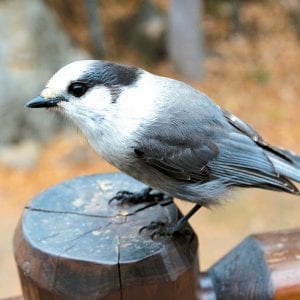Both feeder watchers and walking/ driving birders are needed for the 2010 Audubon Christmas Bird Count (CBC). Thecount will be held Saturday, Dec. 18 for the Grand Marais count, which consists of a 7.5-mile radius circle from a point three miles south of the middle of Devil Track Lake. The count circle covers Highway 61 to Lindskog Road and north, some of County Road 60, the Gunflint Trail to the landfill road, Pine Mountain Road to the back side of Elbow Lake, Devil Track Road to Bally Creek Road, Ball Club Road to The Grade, Pike Lake Road, and Highway 61 west to Cascade Lodge, and all of the lakeshore between Lindskog Road and Cascade Lodge.
Participants can cover as much or as little as they like. Novices or professionals are welcome, since CBCs are open to birders of all skill levels. Organizer Jeremy Ridlbauer said, “We can use both walkers/ drivers as well as feeder watchers who can identify birds,and can count the highest number of a single species in an area as well.”
The count also records any species of birds that are seen in the count circle, but not on the count day. This “count week” happens for the three days prior and three days after the count day of Saturday.
For count day, participants need a guide book, binoculars, a scope for lake birding, warm clothes, warm boots/Yak Traks, a log book to record observations, and a keen and quick eye to count winter rarities.
If you are a feeder watcher, organizers suggest keeping your feeders full through count day to encourage birds to be there on that day. Have various foods available in feeders and on the ground to entice as many species as possible.
While Audubon’s national CBC effort began Christmas Day 1900, the first known Minnesota CBCs were conducted on Christmas Day 1905 in Minneapolis and Red Wing. During those last 103 years, the Christmas Bird Count has been conducted uninterrupted in the state and has grown to include almost 70 census circles and involve more than 28,000 participants. Each and every year more than 1,000 participants canvass the state to conduct the survey.
These participants have logged nearly 77,000 total hours, traveling approximately 548,000 miles. The Minnesota CBC has tallied over 8.5 million birds of 201 species. Today, over 55,000 volunteers from all 50 states, every Canadian province, parts of Central and South America, Bermuda, the West Indies, and Pacific islands count and record every individual bird and bird species seen in a specified area. Each count group completes a census of the birds found during one 24-hour period between Dec. 14 and Jan. 5 in a designated circle 15 miles in diameter—about 177 square miles.
Contact Jeremy Ridlbauer at sundew@ boreal.org or 370-0733 to volunteer.
Ridlbauer or one of the other organizers will contact you or ask you to contact them on the count day to report results. Participants are asked to meet at 4:15 p.m. on count day to compile results from anyone who can make it there at that time.



Loading Comments